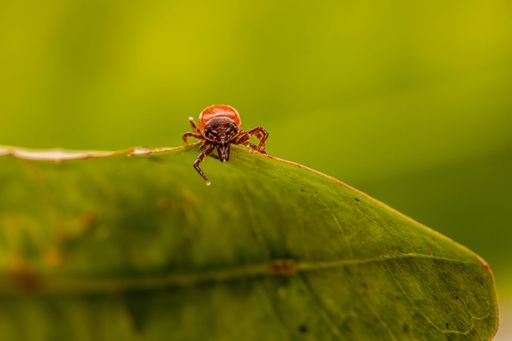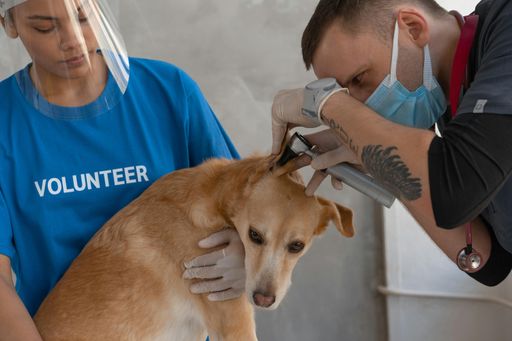You know the itchy nose, watery eyes feeling that tells you something in your home is triggering your allergies? You can probably tell what it is: the old flowers on your kitchen table, the unwashed pillowcase on your bed, or your beloved pet going through shedding season. But did you know that your pet can experience allergies, too—and they could be caused by entirely different sources around your home?
Pets tend to experience many familiar symptoms of allergic reactions, like itchy skin, runny nose, and watery eyes. You might notice your dog or cat sneezing more frequently, and if the reaction is intense, they may begin to wheeze when they breathe. The most aggressive symptoms include recurring ear and sinus infections. If you recognize any of these symptoms in your pet, you might take them to the vet for treatment and look around your home for some of these typical sources of allergies in pets:
Dust Mites
Perhaps it shouldn’t be surprising that the number-one household allergen for people and pets. Dust mites are microscopic critters that feed on dead skin cells. They are nearly everywhere in your home, and the only way to keep them in check is to be diligent about cleaning. You should have a strict washing schedule for the beds and rugs your pet uses for sleep, which will reduce their contact with those pesky mites.
Household Plants
Pollen is the next most common cause of allergies in pets and people after dust mites. Therefore, you might try to get rid of any flowering plants inside or outside your home. A strong air filter or air purifier is also a valuable tool as it will trap pollen—and any other airborne allergen, like dust and mites—before it irritates you or your pet. Keep in mind that you need to regularly replace filters to ensure they effectively capture allergens and pollutants.
Even if you don’t have any houseplants that produce flowers, your indoor greenery may be the source of your pet’s poor health. Plenty of plants are poisonous to dogs and other pets, so you absolutely should not have them in your home if you want to keep your four-legged friends safe. What’s more, potting soil can harbor mildew and mold when it is kept moist; you should eliminate any plants that prefer overly wet soil and avoid overwatering your remaining plants to prevent mold growth.
Pet Beds and Toys
In addition to harboring dust mites, your pet’s bed and toys might cause an allergic reaction because they are made of irritating fabrics and stuffing. Wool and down, in particular, can trigger allergies. If frequent washing isn’t helping your pet’s allergies, you might consider investing in a hypoallergenic bed.
Other Pets
Just like some people are allergic to some types of animals, some pets can develop allergies to fellow furry friends. Pet allergies are more likely to develop when pets are newly exposed to different animals; for example, if you notice allergies in your dog shortly after you bring home a brand-new kitten, the kitty might be to blame. Fortunately, pet allergies are not common, so you should look for other environmental triggers before you banish your new pet from your home.
Household Cleaners
Cleaning supplies with harsh chemicals are harmful to humans and pets alike. Unless you are militant about rinsing after you wash, chemical cleaning residues may remain in your environment and agitate your pet's eyes, skin, or respiratory system. You should use pet-safe cleaners like vinegar and baking soda whenever possible.
Then, to distance your pet from the harsh chemicals causing them trouble, you might store your more intense cleaning products in a secure storage building. The structure should be locked, and any chemicals inside should be well out of your pet’s reach on a strong shelving unit.
Alongside your household chemicals, you should keep methods of cleaning up any potentially hazardous spills, such as extra kitty litter, sand, and personal protective equipment like gloves or goggles. These measures should reduce the likelihood of triggering your pet’s allergies or causing more devastating harm to you or your furry friends.
Plastics
An allergy to plastics tends to be more common in cats, particularly cats who eat or drink out of plastic bowls. Although somewhat rare, this allergy will manifest as irritation around the mouth, and you might also notice your animal neglecting its food and water. Fortunately, this allergy can easily be remedied by switching to stainless steel pet bowls.
Food
Food allergies in pets can provoke some of the most severe reactions, such as vomiting and diarrhea. Pets can develop food allergies, and identifying the exact allergen and finding a viable replacement can take a long time. If you suspect that your pet’s food is the problem, you should talk to their vet about an elimination diet and strategies for successfully introducing new foods.
The last thing you want is for your pet to experience the discomfort of allergies, regardless of their cause. By recognizing the symptoms of an allergic reaction and working to rid your home of allergens, you can give your pet the love and care they deserve.



















